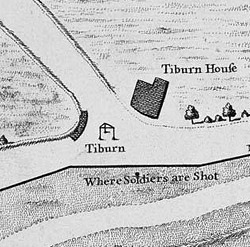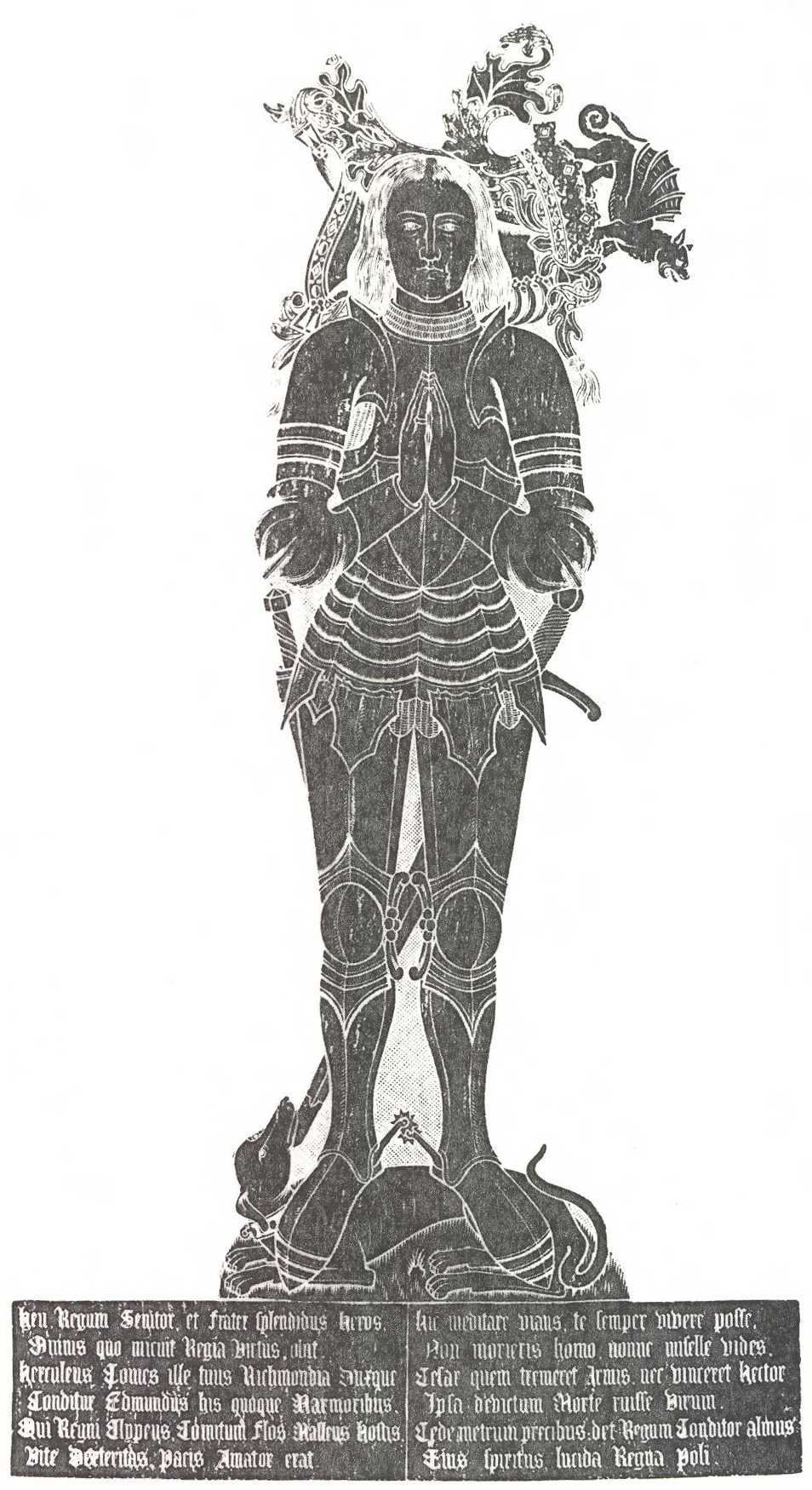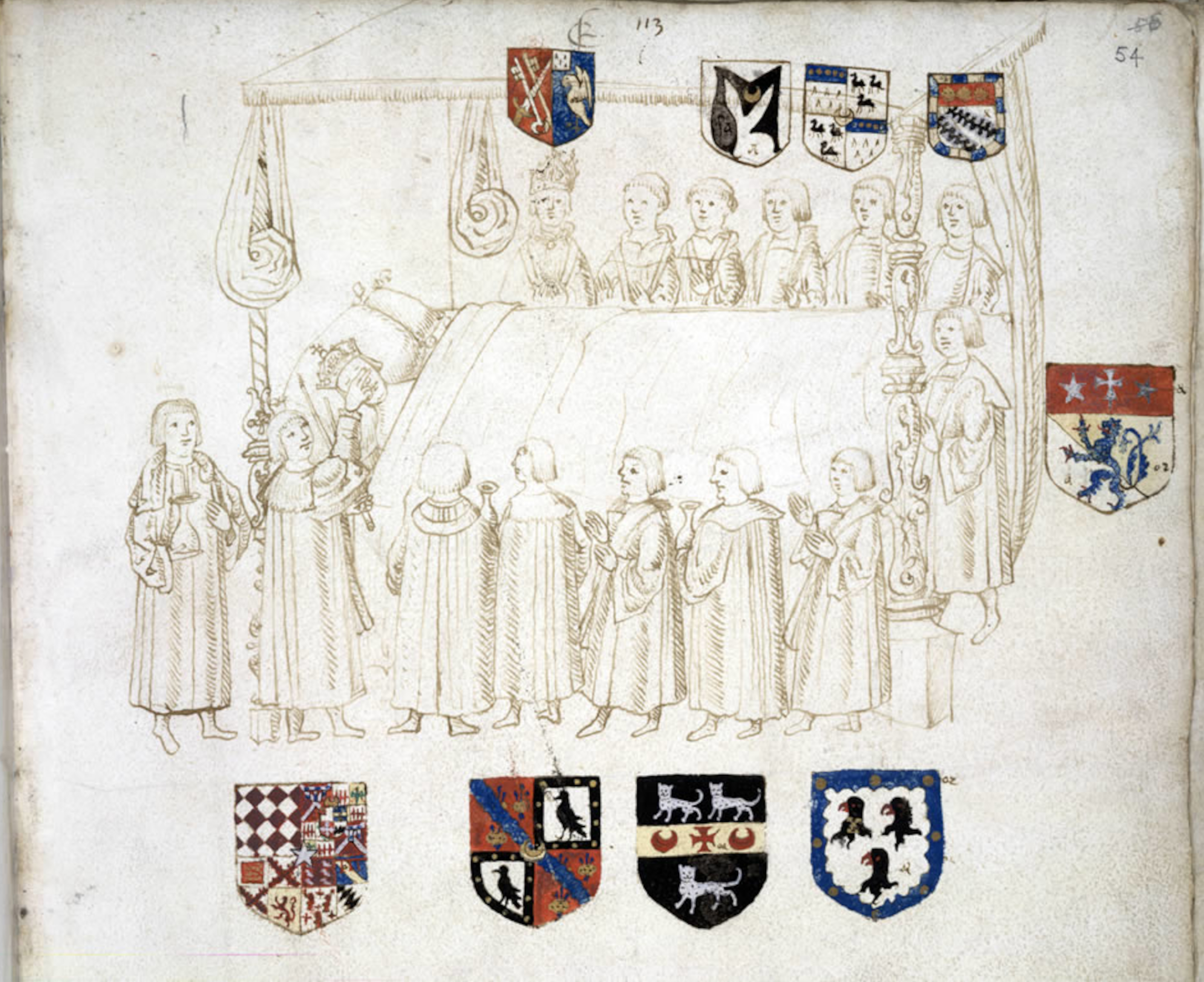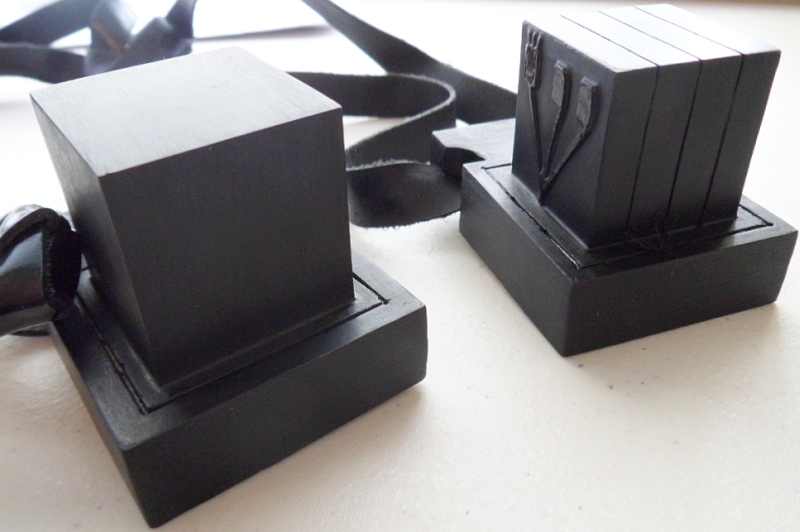|
Lady Catherine Gordon
Lady Catherine Gordon (–October 1537) was a Scottish noblewoman and the wife of Yorkist pretender Perkin Warbeck, who claimed he was Richard of Shrewsbury, Duke of York. After her imprisonment by King Henry VII of England, she became a favoured lady-in-waiting of his wife, Elizabeth of York. She had a total of four husbands, but there are no records of any surviving children. Family Lady Catherine was born in Scotland, the daughter of George Gordon, 2nd Earl of Huntly, by his third wife, Lady Elizabeth Hay.''The Scots Peerage, Founded on Wood's Edition of Sir Robert Douglas's Peerage of Scotland'', ed. James Balfour Paul, Vol. IV (Edinburgh: David Douglas, 1907), pp. 530-1 Some 19th-century writers had assumed she was a daughter of James I of Scotland, King James I's daughter Annabella of Scotland, Annabella, who had been the Earl of Huntly's first wife.Her mother was apparently not Annabella as some accounts have stated, as the Earl of Huntly divorced Annabella in 1471. Cath ... [...More Info...] [...Related Items...] OR: [Wikipedia] [Google] [Baidu] |
Perkin Warbeck
Perkin Warbeck ( 1474 – 23 November 1499) was a pretender to the English throne claiming to be Richard of Shrewsbury, Duke of York, who was the second son of Edward IV and one of the so-called "Princes in the Tower". Richard, were he alive, would have been the rightful claimant to the throne, assuming that his elder brother Edward V was dead and that he was legitimate—a point that had been previously contested by his uncle, King Richard III. Due to the uncertainty as to whether Richard had died (either of some natural cause or having been murdered in the Tower of London) or whether he had somehow survived, Warbeck's claim gained some support. Followers may have truly believed Warbeck was Richard or may have supported him simply because of their desire to overthrow the reigning king, Henry VII, and reclaim the throne. Given the lack of knowledge regarding Richard's fate, and having received support outside England, Warbeck emerged as a significant threat to the newly esta ... [...More Info...] [...Related Items...] OR: [Wikipedia] [Google] [Baidu] |
Tyburn
Tyburn was a manor (estate) in the county of Middlesex, one of two which were served by the parish of Marylebone. The parish, probably therefore also the manor, was bounded by Roman roads to the west (modern Edgware Road) and south (modern Oxford Street), the junction of these was the site of the famous Tyburn Gallows (known colloquially as the "Tyburn Tree"), now occupied by Marble Arch. For this reason, for many centuries, the name Tyburn was synonymous with capital punishment, it having been the principal place for execution of London criminals and convicted traitors, including many religious martyrs. It was also known as 'God's Tribunal', in the 18th century. Tyburn took its name from the Tyburn Brook, a tributary of the River Westbourne. The name Tyburn, from Teo Bourne, means 'boundary stream',Gover, J. E. B., Allen Mawer and F. M. Stenton ''The Place-Names of Middlesex''. Nottingham: English Place-Name Society, The, 1942: 6. but Tyburn Brook should not be confused wit ... [...More Info...] [...Related Items...] OR: [Wikipedia] [Google] [Baidu] |
Pall (funeral)
A pall (also called mortcloth or casket saddle) is a cloth that covers a casket or coffin at funerals. The word comes from the Latin ''pallium'' (cloak), through Old English. A pall or palla is also a stiffened square card covered with white linen, usually embroidered with a cross or some other appropriate symbol. The purpose of this pall is to keep dust and insects from falling into the Eucharistic elements in a chalice. The derivation is the same: the cloth is named after the presumed cloth that covered the body of Jesus. The use of a rich cloth pall to cover the casket or coffin during the funeral grew during the Middle Ages; initially these were brightly coloured and patterned, only later black, and later still white. They were usually then given to the Church to use for vestments or other decorations. The rules for the pall's colour and use vary depending on religious and cultural traditions. Commonly today palls are pure white, to symbolize the white clothes worn durin ... [...More Info...] [...Related Items...] OR: [Wikipedia] [Google] [Baidu] |
Margaret Beaufort, Countess Of Richmond And Derby
Lady Margaret Beaufort (usually pronounced: or ; 31 May 1441/43 – 29 June 1509) was a major figure in the Wars of the Roses of the late fifteenth century, and mother of King Henry VII of England, the first Tudor monarch. A descendant of King Edward III, Lady Margaret passed a disputed claim to the English throne to her son, Henry Tudor. Capitalising on the political upheaval of the period, she actively manoeuvred to secure the crown for her son. Beaufort's efforts ultimately culminated in Henry's decisive victory over King Richard III at the Battle of Bosworth Field. She was thus instrumental in orchestrating the rise to power of the Tudor dynasty. With her son crowned Henry VII, Lady Margaret wielded a considerable degree of political influence and personal autonomy – both unusual for a woman of her time. She was also a major patron and cultural benefactor during her son's reign, initiating an era of extensive Tudor patronage. She is credited with the establishment o ... [...More Info...] [...Related Items...] OR: [Wikipedia] [Google] [Baidu] |
William Blount, 4th Baron Mountjoy
William Blount, 4th Baron Mountjoy (8 November 1534), KG, of Barton Blount, Derbyshire, was an extremely influential English courtier, a respected humanistic scholar and patron of learning. He was one of the most influential and perhaps the wealthiest English noble courtier of his time. Mountjoy was known internationally as a humanist writer and scholar and patron of the arts. Origins William Blount was born circa 1478 in Barton Blount, Derbyshire, the eldest son of John Blount, 3rd Baron Mountjoy (c. 14501485) by his wife Lora Berkeley (died 1501), daughter of Edward Berkeley (died 1506) of Beverston Castle, Gloucestershire. After her husband's death in 1485, Lora Berkeley remarried first Sir Thomas Montgomery (died 1495), and secondly Thomas Butler, 7th Earl of Ormond (died 1515), grandfather of Thomas Boleyn, 1st Earl of Wiltshire, father of Queen Anne Boleyn, second wife of King Henry VIII. Biography Blount was a pupil of Erasmus, who called him ''inter nobiles doctissimus'' ... [...More Info...] [...Related Items...] OR: [Wikipedia] [Google] [Baidu] |
Elizabeth Stafford, Countess Of Sussex
Elizabeth Stafford (c. 1479 – 11 May 1532) was an English noblewoman. Family Elizabeth Stafford was the daughter of Henry Stafford, 2nd Duke of Buckingham, and Lady Catherine Woodville, the daughter of Richard Woodville, 1st Earl Rivers, by Jacquetta of Luxembourg, daughter of Pierre de Luxembourg, Count of St Pol, and was thus a niece of Elizabeth Woodville, queen consort to King Edward IV. By her father's marriage to Catherine Woodville, Elizabeth Stafford had two brothers, Edward Stafford, 3rd Duke of Buckingham, and Henry Stafford, 1st Earl of Wiltshire, and a sister, Anne, who married firstly, Sir Walter Herbert (died 16 September 1507), an illegitimate son of William Herbert, 1st Earl of Pembroke, and secondly, George Hastings, 1st Earl of Huntingdon. After the execution of the 2nd Duke of Buckingham, his widow, Catherine Woodville, married Jasper Tudor, second son of Owen Tudor and King Henry V's widow, Catherine of Valois. After Jasper Tudor's death on 21 Decem ... [...More Info...] [...Related Items...] OR: [Wikipedia] [Google] [Baidu] |
Patrick Hepburn, 1st Earl Of Bothwell
Patrick Hepburn, 1st Earl of Bothwell (died 18 October 1508) was Lord High Admiral of Scotland. He rose to political prominence after supporting James IV against his father, and was proxy at the King's marriage. Career Patrick was the son of Adam Hepburn, Master of Hailes, and succeeded his grandfather also Patrick Hepburn as the 2nd Lord Hailes in (1482/1483). He or his grandfather held Berwick Castle against an English army led by Richard, Duke of Gloucester until the last week of August 1482, after which Berwick upon Tweed became a possession of England. Under his territorial designation of "Patrick Hepburn of Dunsyre," he was made Sheriff of Berwickshire on 15 June 1480. Patrick Hepburn, Lord Hailes, was one of the Conservators of a truce with England on 20 September 1484. He was one of the leaders of the Confederate Lords who rebelled against King James III of Scotland, and he led the vanguard against the Royal array at the battle of Sauchieburn, 11 July 1488. Robert Birrel ... [...More Info...] [...Related Items...] OR: [Wikipedia] [Google] [Baidu] |
Richmond Palace
Richmond Palace was a royal residence on the River Thames in England which stood in the sixteenth and seventeenth centuries. Situated in what was then rural Surrey, it lay upstream and on the opposite bank from the Palace of Westminster, which was located nine miles (14 km) to the north-east. It was erected in about 1501 by Henry VII of England, formerly known as the Earl of Richmond, in honour of which the manor of Sheen had recently been renamed "Richmond". Richmond Palace therefore replaced Shene Palace, the latter palace being itself built on the site of an earlier manor house which had been appropriated by Edward I in 1299 and which was subsequently used by his next three direct descendants before it fell into disrepair. In 1500, a year before the construction of the new Richmond Palace began, the name of the town of Sheen, which had grown up around the royal manor, was changed to "Richmond" by command of Henry VII."Richmond", in ''Encyclopædia Britannica'', (9th edit ... [...More Info...] [...Related Items...] OR: [Wikipedia] [Google] [Baidu] |
Margaret Tudor
Margaret Tudor (28 November 1489 – 18 October 1541) was Queen of Scotland from 1503 until 1513 by marriage to King James IV. She then served as regent of Scotland during her son's minority, and successfully fought to extend her regency. Margaret was the eldest daughter and second child of King Henry VII of England and Elizabeth of York, and the elder sister of King Henry VIII of England. Margaret married James IV at the age of 13, in accordance with the Treaty of Perpetual Peace between England and Scotland. Together, they had six children, though only one of them reached adulthood. Margaret's marriage to James IV linked the royal houses of England and Scotland, which a century later resulted in the Union of the Crowns. Following the death of James IV at the Battle of Flodden in 1513, Margaret, as queen dowager, was appointed as regent for their son, King James V. A pro-French party took shape among the nobility, urging that she should be replaced by John, Duke of Albany, t ... [...More Info...] [...Related Items...] OR: [Wikipedia] [Google] [Baidu] |
Tippet
A tippet is a piece of clothing worn over the shoulders in the shape of a scarf or cape. Tippets evolved in the fourteenth century from long sleeves and typically had one end hanging down to the knees. A tippet (or tappit) could also be the long, narrow, streamer-like strips of fabric worn as an armband just above the elbow, that hung gracefully to the knee or even the ground. In later fashion, a tippet is often any scarf-like wrap, usually made of fur, such as the sixteenth-century zibellinoArnold, Janet: ''Queen Elizabeth's Wardrobe Unlock'd'', W S Maney and Son Ltd, Leeds 1988. or the fur-lined capelets worn in the mid-18th century. Ecclesiastical use Anglican The ceremonial scarf often worn by Anglican priests, deacons, and lay readers is called a tippet, also known as a "preaching scarf". It is worn with choir dress and hangs straight down at the front. Ordained clergy (bishops, priests and deacons) wear a black tippet. In the last century or so variations have arisen to ... [...More Info...] [...Related Items...] OR: [Wikipedia] [Google] [Baidu] |
Frontlet
Tefillin (; Israeli Hebrew: / ; Ashkenazic pronunciation: ), or phylacteries, are a set of small black leather boxes with leather straps containing scrolls of parchment inscribed with verses from the Torah. Tefillin are worn by adult Jews during weekday morning prayers. In Orthodox and traditional communities, they are worn solely by men, while some Reform and Conservative (Masorti) communities allow them to be worn by both men and women. By traditional Jewish Law (halacha), women are exempt from most time-dependent positive commandments. Although "tefillin" is technically the plural form (the singular being "tefillah"), it is often used as a singular as well. The arm-tefillah (or ''shel yad'' iterally "of the hand" is placed on the upper (non-dominant) arm, and the strap wrapped around the forelimb, hand and middle finger; while the head-tefillah (or ''shel rosh'' iterally "of the head" is placed between the eyes at the boundary of the forehead and hair. They are intended ... [...More Info...] [...Related Items...] OR: [Wikipedia] [Google] [Baidu] |
Miniver
Miniver, an unspotted white fur edged with grey, derives from the winter coat of the red squirrel. Miniver differs from ermine (stoat) fur in that it does not include the distinctive black tails of the stoat but is formed of distinctive grey edged panels cut from the complete fur and framing the white belly. From a red squirrel, which has a greyish-white winter coat with a white underside, miniver gros, or vair, is the whole fur, including the grey, and miniver pure retains only the white part. The heraldic fur, vair Vair (; from Latin ''varius'' "variegated"), originating as a processed form of squirrel fur, gave its name to a set of different patterns used in heraldry. Heraldic vair represents a kind of fur common in the Middle Ages, made from pieces of ..., translates the grey into blue, and alternates back and belly. R. Delort, Le commerce des fourrures en occident à la fin du moyen-âge, Rome, 1978. See also * References Fur {{clothing-stub ... [...More Info...] [...Related Items...] OR: [Wikipedia] [Google] [Baidu] |









